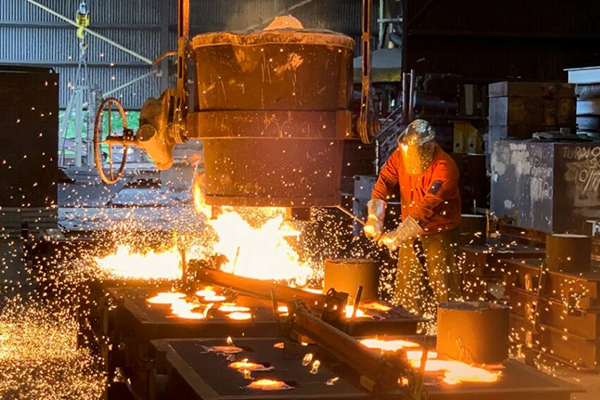Advantages of chromite sand AFS35-40 for chromite filler mess
, also known as ladle well block or nozzle filler sand. It is an important part of furnace refractory material. The raw material of Chromite filler mess is chromite sand and other additives. It has the advantages of high specific gravity, good fluidity, high melting point, and no over-sintering. In chrome ladle well filler, when the amount of chromite sand is above 60%, the chromite grain is continuously distributed. That helps to form a continuous sintering layer. Under high temperature, FeO in chromite sand reacts and dissolves to form secondary spinel. That changes the volume of the sintering layer and produces cracks. In this way, when the slide gate open, the unbonded drainage sand at the bottom of the water inlet flows out quickly, and the cracks in the sintering layer expand rapidly. Under the static pressure of the molten steel, the sintering layer is completely destroyed. So that the purpose of automatic pouring can be achieved. The chrome based ladle filler mess is used by most large steel mills, accounting for about 30% of the drainage sand for the entire ladle, especially the refining ladle.
The chromite sand used to produce nozzle filler requires a Cr2O3 content of more than 46%, SiO2 content of less than 1%, and moisture content of less than 0.1%. The chromite grain size are usually 20-70 mesh, 30-70 mesh, 40-70 mesh(AFS30-35,AFS35-40,AFS40-45). In some cases, 50-100 mesh (AFS45-50) with low dust also works.
The performance advantages of chromite sand:
1. High specific gravity.
The specific gravity of chromite sand is 4.2-4.6g/cm3, which is higher than silica sand and zircon sand.
2. High refractory temperature.
After the ladle filler mess is made, the sintered layer is directly in contact with the molten steel. Therefore, it is beneficial to isolate the molten steel before pouring.
3. Low thermal expansion coefficient.
When the molten steel is poured, the filling sand will not cause friction with the inner wall of the nozzle due to volume expansion, affecting the falling of the drainage sand.
4. Good fluidity.
The crystal characteristics of chromite sand are that it will not produce particularly prominent corners after crushing. And the particles do not need to be shaped to be spherical. It is conducive to the natural fall of the drainage sand at the ladle nozzle when the molten steel is poured.
5. Strong thermal conductivity and proper sintering.
The nozzle filler mass made of chromite sand easily forms a sintering layer on the upper part of the nozzle. The heat of the sintering layer can be quickly conducted, so the drainage sand under the sintering layer is not easy to sinter. When the sliding gate open, the sintering layer can be quickly destroyed. Thus, it improves the pouring rate of molten steel.
6. Moderate particle size and less fine powder.
By controlling the particles under the 140 mesh sieve of chromite sand, excessive sintering of fine powder is prevented. That affects the pouring rate of ladle furnace.
arenas de cromita, Fundición cromita, La arena de cromita, cromita preço,Areia de minério de ferro cromado, Cromita refratária, Areia cromada

















